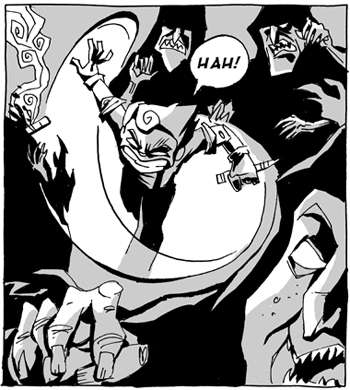Hello all sorry for the delay I had some computers issues.
I went to Dragon-Con, unfortunately I do not have any pictures to show from the art gallery as they were not allowed. However, I was able to sit down and talk with comic artist Dusty Higgins, the artist of Pinocchio Vampire Slayer and Knights of the Living Dead. One of the things that we talked about was the digital art medium as Knights of the Living Dead was his first comic that he had done completely digitally without inking or sketching on paper first.
We spoke specifically on whether to screen tone or shade when doing black and white comics. With Pinocchio Vampire Slayer Dusty used screen tones and with Knights of the Living Dead he used shading. If you are not familiar with “screen tones” it is a tool used on art programs that makes shading quicker and easier by creating a large blanket of dots or cross hatched lines. This produces the desired shading effect without having to actually color and shade each page. Many artists will use this to reduce cost for black and white pages. Because shading a black and white page often takes the same time as using full colors which many artists charge a different rate for.
Often screen tones work fine especially when high quality printing is done, but sometimes they can leave a little to be desired. In general I feel the toning style does not matter if the story is great and the rest of the art is clean. Here are some examples of screen tones vs shading in black in white, which do you prefer?


Also you can check out Dusty’s work at SLGcomic.com
Madison Hawthorne is a comic enthusiast and writer based in Pittsburgh, PA. Madison’s comic “King of Sweden” is available at Amazon.com






